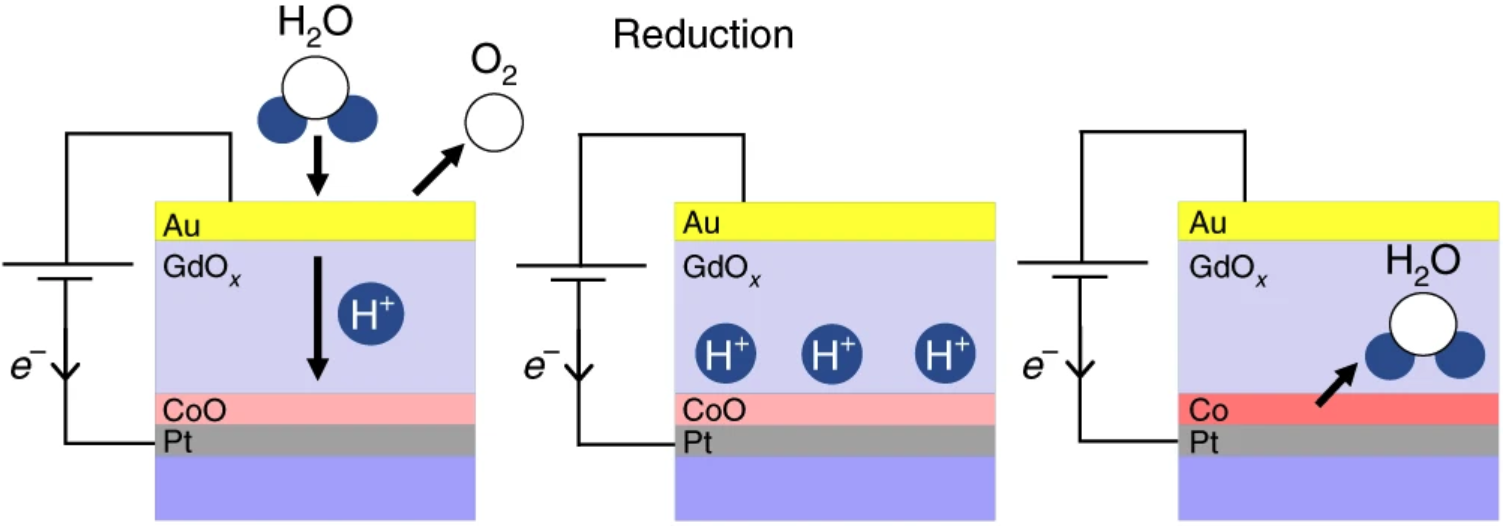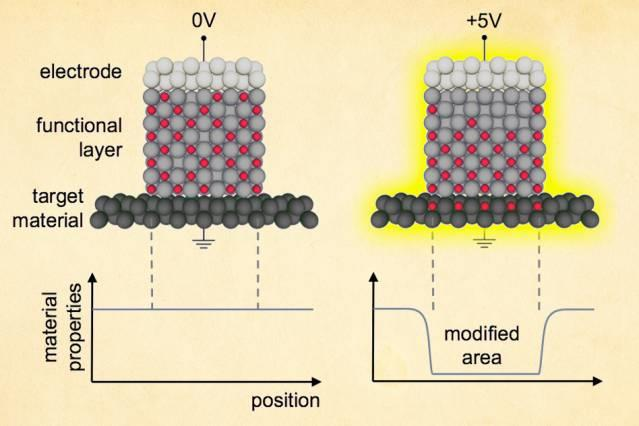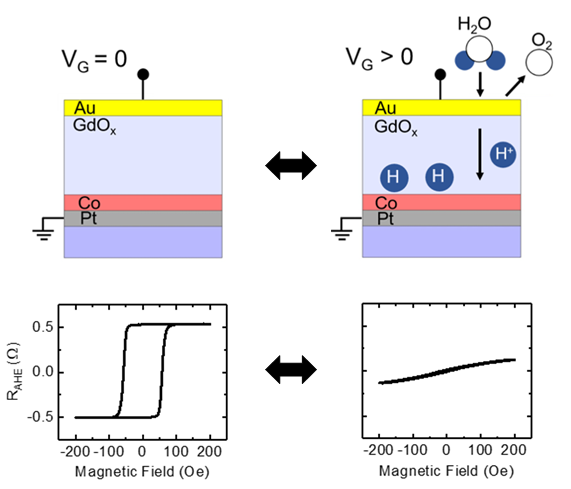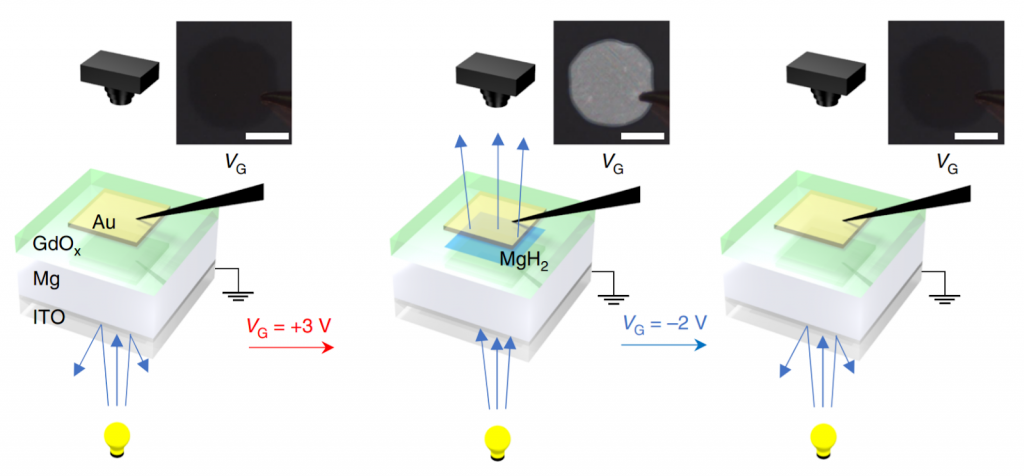
Magneto-Ionic Devices
Electric field control of the magnetic state of a material could enable new low-power logic devices and nonvolatile memory cells. One of the missing ingredients has been a way to easily and rapidly control the magnetic properties of a material electrically, by applying a voltage. Previous attempts have relied on electron accumulation at the interface between a metallic magnet and an insulator, where the electrical charge can change the magnetic properties of the material, but only by a very small amount.

We show that by sandwiching an solid-state electrolyte layer between a magnetic layer and a top electrode layer, the properties of the magnetic layer could be changed dramatically by applying a small voltage across the stack. The change is achieved through ionic transport and electrochemical reactions. The amplitude of change is much greater than that achieved through pure electronic effect. Changes in magnetic properties made in this way remain in their new state without the need for any ongoing power. These effects open the door to electrically gated spintronic devices based on materials amenable to integration with conventional semiconductor electronics.

The same techniques could be used to alter other properties of materials, such as electrical, optical or thermal properties. These properties can ordinarily be changed only through mechanical or chemical processing. The approach enables these properties to be controlled electrically, to be switched on and off.

Researchers:
Usama, Alex
Recent Publications:
115. S. Sheffels, P. P. Balakrishnan, M. Huang, S. Muramoto, J. A. Borchers, J. A. Dura, A. J. Grutter, and G. S. D. Beach, “Insight on hydrogen injection and GdOx/Co interface chemistry from in operando neutron reflectometry and secondary ion mass spectrometry,” Appl. Phys. Lett., vol. 122, p. 022407 (2023). (view pdf)
114. A. E. Kossak, M. Huang, P. Reddy, D. Wolf, and G. S. D. Beach, “Voltage control of magnetic order in RKKY coupled multilayers,” Sci. Adv., vol. 9, p. eadd0548 (2023). (view pdf)
111. A. E. Kossak, D. Wolf, and G. S. D. Beach, “Magneto-ionic enhancement and control of perpendicular magnetic anisotropy,” Appl. Phys. Lett., vol. 121, p. 222402 (2022). (view pdf)